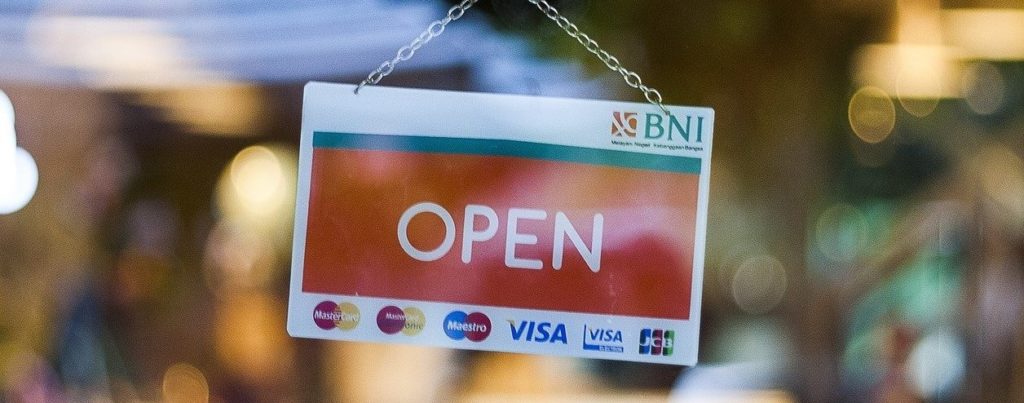- Home
- COVID-19 Business Resource Center
- Resources
- Articles
- 4 Steps to Safely Reopen Your Retail Business

As states begin to restart their economies, the reopening of retail stores and restaurants will be a key catalyst. In normal times, “reopening” meant restocking, tidying up, and turning the lights back on. Business owners will face a completely different retail landscape post-pandemic and must take steps to adjust accordingly.
With an estimated 630,000 retail locations closed nationwide, there will be a rush to reopen – and reopen quickly. Many customers will be anxious to shop again. Businesses will need to be strategic in how they operate to protect employees and customers against further spreading the coronavirus.
Business owners will also face the difficulty of reopening on a rolling schedule and having to comply with strict health requirements, on a national, state, and municipal level. As the country responds to the novel coronavirus, requirements can change on a moment’s notice. Business owners must be agile in reacting to the unpredictability. Reopening for business amidst many uncertainties can be unsettling. Here are four steps retail businesses will need to take to reopen safely in the coming days and weeks.
1) Clean to Disinfect
Common touchpoints such as shopping carts, point-of-sale devices, and door handles need to be sanitized often. What used to be cleaning to tidy up is now cleaning to disinfect. If someone at a location tests positive or displays symptoms, it is recommended to ventilate the area and wait 24 hours before cleaning again.
Document your cleaning to ensure it is done consistently and to avoid potential liability. It requires retailers to acquire and distribute cleaning supplies on a vast scale, including disinfectant, wipes, hand sanitizer, and gloves. Many of which are in short supply.
2) Redesign Spaces
Reevaluate the design and flow of your store and determine if there is safe distancing for shoppers and employees. Solutions could include installing plexiglass “sneeze guards” at POS stations, laying out spaced-out floor decals in checkout lines, or extra signage to redirect the flow of traffic inside the store. Retailers also need procedures in place to check customer temperatures or ensure they are wearing masks.
These new procedures may be subject to local regulations but otherwise each store needs to decide what makes sense for its unique location.
3) Protect Employees
Personal safety equipment, such as face masks, gloves, and face shields, will be needed for all employees. Workers may have to fill out a daily health questionnaire and/or have temperatures checked to confirm they are fit to work.
Retailers also need policies for accommodating “at risk” employees, such as elderly workers or those with underlying health conditions, and for those who refuse to return to work. Make sure that you are in compliance with the mandatory federal posting requirements of the Families First Coronavirus Response Act. The poster is in effect until the end of 2020. It summarizes the emergency paid sick leave law and applies to private employers with fewer than 500 employees and certain public employees.
4) Get the Message Out
Let customers know how your business is responding and the steps you are taking to safely reopen. Customers need to be confident they are being protected, as well as the employees. Businesses can gain the trust of customers through transparency and prioritizing the well-being of their community over profitability. Whether it’s prominent signage that tells customers you are open, social media posts announcing updated hours and processes, or email marketing campaigns educating consumers about sanitation efforts, these efforts will go a long ways in winning customers long-term.
Despite the temptation to reopen quickly and hastily, it’s incumbent on all businesses and customers to follow state guidelines and be flexible as everyone adjusts to the “new normal.” Don’t expect customers to flock to stores immediately upon reopening but the steps businesses take now can provide a strong foundation for recovery. At Safeguard, we understand better than anyone that small business is the lifeblood of every community, and our local advisors are by your side as we recover. Safely. Together.